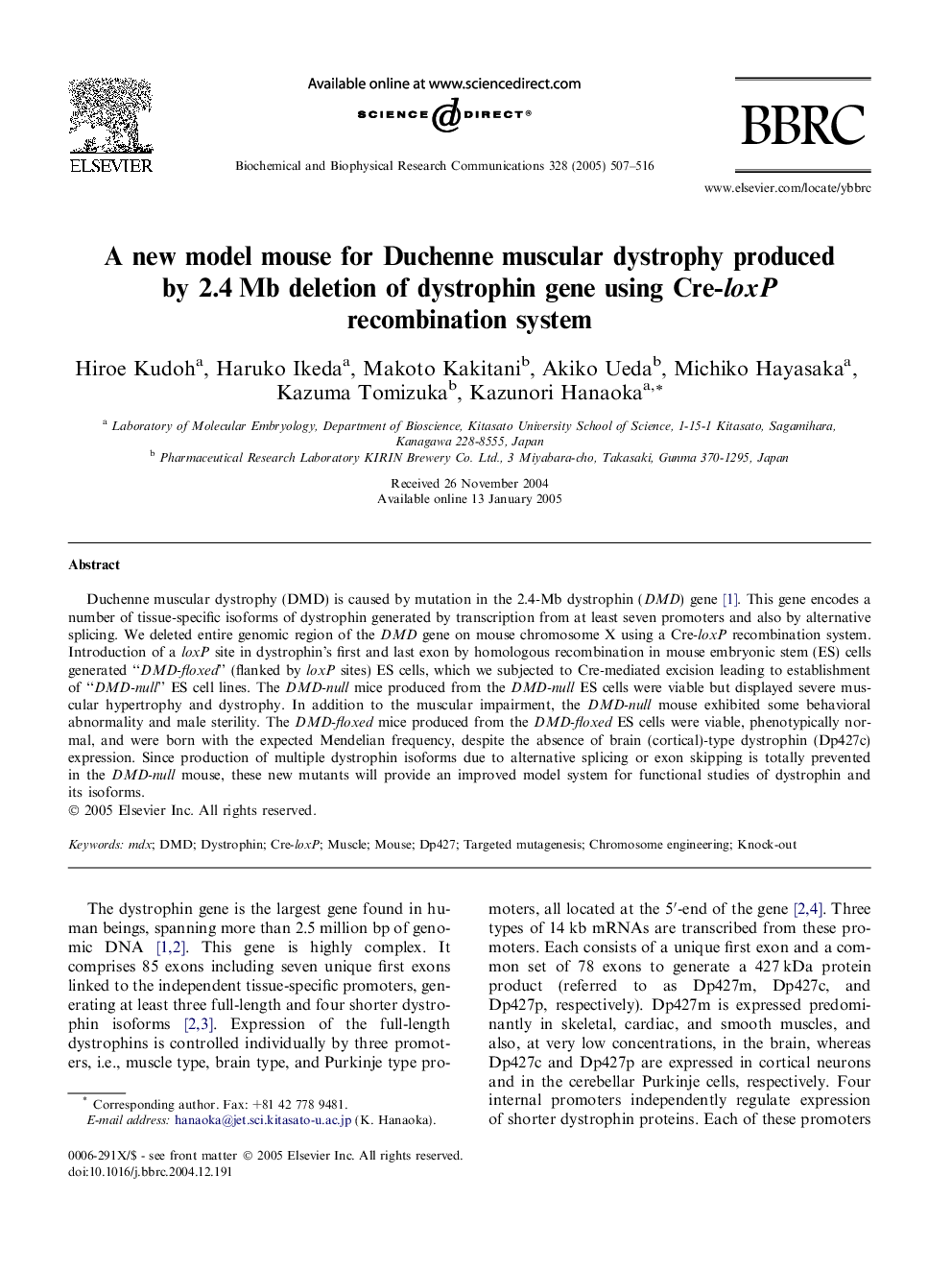| Article ID | Journal | Published Year | Pages | File Type |
|---|---|---|---|---|
| 10771166 | Biochemical and Biophysical Research Communications | 2005 | 10 Pages |
Abstract
Duchenne muscular dystrophy (DMD) is caused by mutation in the 2.4-Mb dystrophin (DMD) gene [1]. This gene encodes a number of tissue-specific isoforms of dystrophin generated by transcription from at least seven promoters and also by alternative splicing. We deleted entire genomic region of the DMD gene on mouse chromosome X using a Cre-loxP recombination system. Introduction of a loxP site in dystrophin's first and last exon by homologous recombination in mouse embryonic stem (ES) cells generated “DMD-floxed” (flanked by loxP sites) ES cells, which we subjected to Cre-mediated excision leading to establishment of “DMD-null” ES cell lines. The DMD-null mice produced from the DMD-null ES cells were viable but displayed severe muscular hypertrophy and dystrophy. In addition to the muscular impairment, the DMD-null mouse exhibited some behavioral abnormality and male sterility. The DMD-floxed mice produced from the DMD-floxed ES cells were viable, phenotypically normal, and were born with the expected Mendelian frequency, despite the absence of brain (cortical)-type dystrophin (Dp427c) expression. Since production of multiple dystrophin isoforms due to alternative splicing or exon skipping is totally prevented in the DMD-null mouse, these new mutants will provide an improved model system for functional studies of dystrophin and its isoforms.
Related Topics
Life Sciences
Biochemistry, Genetics and Molecular Biology
Biochemistry
Authors
Hiroe Kudoh, Haruko Ikeda, Makoto Kakitani, Akiko Ueda, Michiko Hayasaka, Kazuma Tomizuka, Kazunori Hanaoka,
